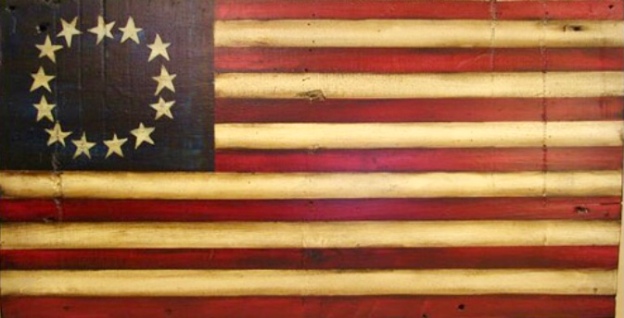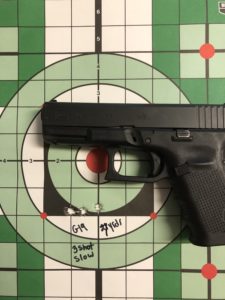
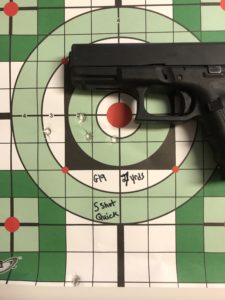
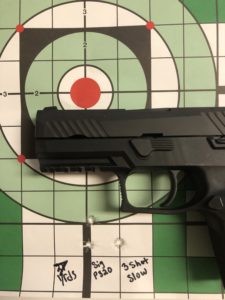
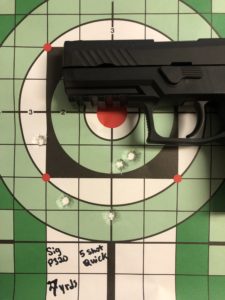
Originally posted by The Gray Man at American Partisan.
I’ll go out on a limb and assume that a great many of the readers at American Partisan are aware of the choice made by the US Army to go with the Sig Sauer P320 as the winner of the Modular Handgun System (MHS) competition. The Army started issuing the P320 full sized pistol and the P320 compact pistol, referred to by the Army as the M17 and M18 respectively, to the 101st Airborne Division in November of 2017. That said, the US special operations community has a bit more leeway in their choice of weapons and gear, and in 2015 it was reported that the US Army Rangers, Special Forces groups and 160th SOAR (followed shortly by MARSOC) had chosen to outfit their units with the Glock 19 (4th generation Glocks at that time), while the MHS competition was still ongoing. Army Chief of Staff General Mark Milley (who was base commander of Fort Hood while I was there in 2013) elected to allow the SOF community to go with the Glock 19 regardless of the outcome of the competition.
Putting recent history aside, as if we can just do that, I’d like to discuss these two handguns and put them beside each other for myself. I own a Sig P320 “compact” that I did send back to Sig when the trigger “recall” occurred. I had not had any problems with my pistol, but since Sig was offering to make it safer and improve the weapon for free and in a timely manner, I gladly took them up on it. I also own a 4th generation Glock 19. The only add-ons to my P320 are a set of night sights that my version came with. My Glock 19 is as stock as stock can be. My version of the P320 would be referred to as the “M18” in Army parlance.
During my time in the Army, I qualified many times with the Beretta M9. Being an intelligence collector, I had to stay qualified with the pistol because we (the intel guys, I mean) all carried them downrange in addition to our long guns. Of all the times I qualified with the M9, which was at least seven times that I recall, starting in 2012 and as recently as the Summer of 2018, I qualified as “expert” every time and I only ever missed a grand total of one target. Assuming that I ran through a pistol qualification course seven times, that’s a total score of 209 out of a possible 210. Maybe I’m not the world’s greatest gunslinger, but I can hit man-sized targets well enough. And yes, I do like the M9.
Now that you know what I’ve got, that I actually own these things and that I’m passable as a military pistol shooter, let’s get to it.
The Glock 19 9mm was originally released in 1988, and currently there is a 5th generation model. The one I use is 4th generation. The Sig Sauer P320 is a new copy of the 9mm Sig Sauer P250, with the P250’s hammer-fired design having been replaced with a striker mechanism. The P320 is modular, being able to convert from 9mm to .40 caliber with some simple parts changes. My model is kept in the 9mm configuration. Both pistols feature a polymer frame with metal slide, and both have a standard ammo capacity of 15+1. The Glock is 5 inches tall, while the Sig P320 is 5.5 inches tall. The Glock is 1.2 inches wide, the Sig’s width is 1.4 inches. The Sig weighs about two ounces more. Both pistols fall into a category of what I like to call “fighting pistols”, i.e. larger sized handguns with adequate kinetic energy transfer and higher ammo capacity. I’m not knocking anyone who carries a .380 with seven rounds or wheelguns with five or six, but a fighting pistol is what I prefer to have with me.
Ergonomics lends itself to the personal preferences of the shooter in most situations, but I think we all know that Glock pistols are not well celebrated for their ergonomic advancement. While I prefer carrying the Glock 19 due to simply becoming accustomed to it over the years, I will say that the P320 fits the hand more comfortably. The bore axis of the Glock sits low, closer to the shooter’s hands, which technically reduces felt recoil. The Sig does have a higher bore axis, as Sigs are known to have, but the weapon has a short beaver-tail that you can push your grip higher into, hopefully mitigating some of that. Both handguns lack external safety switches on the civilian version, and both have a rail to accommodate lights or lasers.
How the weapons shoot and handle ultimately comes down to the shooters themselves. I am able to shoot well enough with both models, as you can see in the photos above. I have no doubt that I could shoot just as well with a Springfield or a Smith and Wesson, two other top quality weapons. One difference between the G19 and P320 that most Glock shooters will see coming is the trigger mechanism. I have felt and still feel that grindy, rough feeling stock Glock trigger pull. The Sig P320 however, can only be described in one word: Smooth. That’s it. This Sig trigger is very smooth and easy feeling. The average Glock 19 trigger pull weight is about 5.5 pounds, while the P320 is about the same at 5.6, albeit with a noticeably shorter travel and a nicer break.
I took these pistols into my backyard range and fired several groups with each from 21 feet away. I went through a “warm-up” magazine with each weapon to make sure I had any rust knocked off (of myself), went through another magazine each to establish a trend and then fired the groups you see below, aiming at the dead center of the target every time (no Kentucky windage) to post here. I used 115-Grain Winchester FMJ. The groups in the photos are representative of the other groups I had fired earlier. In total this session, I fired about 90 rounds. I included the weapon in the images to give you a point of reference on target and group sizes.
For each pistol, I fired a three shot slow-fire group, each shot separated by about one second of time. I followed that up with a five shot quick-fire group, faster than one second each, but not what I would call “rapid-fire”.
In the top two photos above, you see the G19 performed well at grouping the three slow-fired rounds, with a bit of muzzle rise appearing during the five round quick-fire. You can see that I had one round pulled down low, almost missing the page. That’s a bad shot on me.
The next photos show the P320, which also had a nice group on the slow-fire. There was a bit more spread on the five round target, but I managed not to pull any shots this time.
Overall, I’m pleased with the performance of each weapon, and decently satisfied enough with my shooting. Both of these pistols are great fighting pistols and I would highly recommend either one. If I’m able to get my hands on a Springfield or S&W pistol, I’ll try to give those a test as well.




